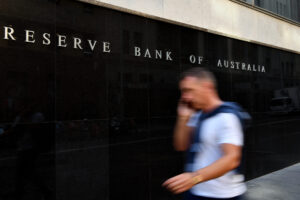Inflation is falling steadily but hitting low-income households the most.
The March quarter consumer price index figures showed a 7.0% annual rise, however as Policy Director, Greg Jericho, notes in his Guardian Australia column, the monthly inflation figures that were also released on Wednesday showed annual growth had fallen to 6.3%.
This fall was down from a peak of 8.4% in December and is the slowest growth since May last year.
The figures reinforce the belief that the RBA board was right to ignore the views of many economists both within and outside the Reserve Bank. Not only is inflation falling but the biggest drivers of inflation in the March quarter were in areas with prices mostly determined by governments or in highly regulated sectors such as the gas and electricity markets. There was little sense of prices rising due to excess demand, rather the combination of price setting in the public sector and by commercial companies making use of high world prices for resources and ongoing supply issues in the housing market served to drive nearly two-thirds of the total increase in overall inflation the March quarter.
Increasing interest rates would have done nothing to lower prices in these areas – indeed in the rental market any further rates rises would likely be just used as reason for increasing rents more.
The Reserve Bank was right to stop raising rates. Should the slowing of inflation shows signs of ending before reaching the RBA’s target of 3% it can always cut rates then. For now, inflation is falling as hoped and attention must be drawn to those suffering the most from the rising prices – notably low-income households and those paying off a HELP debt that is set to be indexed by 7.1% – well above the current levels of wage growth.
Between the Lines Newsletter
The biggest stories and the best analysis from the team at the Australia Institute, delivered to your inbox every fortnight.
You might also like
Corporate Profits Must Take Hit to Save Workers
Historically high corporate profits must take a hit if workers are to claw back real wage losses from the inflationary crisis, according to new research from the Australia Institute’s Centre for Future Work.
Why Does the RBA Want More Unemployed Aussies?
By chasing an invisible and moving target, the RBA’s theories on unemployment and inflation could jeopardise the jobs of 140,000 Australians.
Challenging the Consensus on Profits and Inflation
The Australia Institute’s research on corporate profits – rather than wages – driving inflation has challenged one of the sacred tenets of Australian economic management, leading to pushback from the likes of pro-business media outlets and the Federal Treasury.


